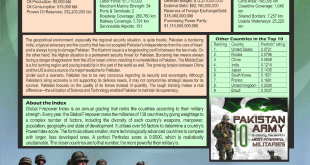An In-depth Analysis of the Causes
In 1971, Pakistan, as a nation, suffered the most terrible shock in its entire history when it lost its eastern wing due to reasons that are well known but yet not very well understood. In this article, an effort has been made to revisit those reasons and causes that led to this national tragedy. Many factors, such as the geographical and socio-cultural differences between the two wings, the language issue, the economic disparity and exploitation of the East Pakistan, disparity in civil service and armed forces, differences over constitution-making, degeneration of Muslim League and the rise of regional Bengali parties, and the political grievances and alienation of East Pakistan, were responsible for the process of decay that finally resulted in the dismemberment of the country. Following is a humble attempt to analyze the fiasco in detail.
Separation of East Pakistan is, undoubtedly, the most tragic episode in the political history of Pakistan. It not only exposed the failure of our efforts on national integration but also manifested the institutional poverty of the political system. Unfortunately, it has, hitherto, been analyzed through myopic approaches which revolve around the whims of certain personalities whose views have been further inculcated in the minds of the next generations through textbooks. Therefore, there is a dire need to analyze this whole episode in a much broader perspective.
1. Historical Structural Reasons
i. Overdeveloped state structure
This theory has been propounded by Hamza Alvi who censures the dominance of military-bureaucratic oligarchy in Pakistan’s state structure. The theory highlights the structural roots of dominance of non-political forces in the state system which is embedded in colonial legacies. The perpetuation of this over-developed state structure obstructed the prevalence of civilian supremacy. Moreover, it encouraged state authoritarianism that further widened the gulf between the two federating units. It also consolidated the dominance of strong centre which was reinforcing under military rule. K.K. Aziz argued, “Only a loose federation might have sustained. West Pakistan tried to contain Bengalis under very strong authoritative structure, as they were being colonized.”
2. East-West Differences
i. Geographical distances
While analyzing the causes of the separation of East Pakistan, we cannot ignore the fact that there was a distance of 1000 miles (1600 kilometres) between the Eastern and Western wings of the country. The hostile India was separating the two wings.
ii. Linguistic differences
The first landmine planted by the Hindus to shatter the national unity was the issue of the linguistic difference. Indians had organized demonstrations in support of Bengalis even during the life of Quaid-e-Azam but their machinations failed. In March 1948, the Quaid had advised the Bengalis to adopt Bengali as the language of the province but to keep Urdu as the national language. But, this issue remained unresolved and, thus, got complicated over the years due to the ineptness of leaders. East Pakistan witnessed a number of Awami League-sponsored riots. In one instance, Section 144 was imposed in Dhaka so as to curtail those riots but the members of the left-oriented Youth League and students defied the restrictive orders. Ultimately, the central leadership accepted Bengali as a second national language but it was too late a measure.
Read More: THE EAST PAKISTAN DEBACLE
iii. Differences in social structure
West Pakistan had dominant share in military and bureaucracy while Hindus in East Pakistan dominated the economy and government jobs. East Pakistan’s social structure was heavily dominated by non-Muslim forces that had inclination towards India.
iv. Demographic differences
There existed a demographic difference between the two wings. East Pakistan had constituted 56 percent of the total population of the new state while the West Pakistan hosted the remaining 44 percent.
v. Cultural differences
The people of East Pakistan were radically different from their counterparts in West Pakistan in a number of cultural traits. There was hardly any interaction between them. Moreover, Pakistan army almost wholly consisted of Punjabi-Pashtun population who could not understand the dynamics of the Eastern wing.
3. General Reasons
i. Intra-regional economic disparities
Before the partition of India, the Muslims of East Bengal generally believed that their economic hardships and miseries were due to the Hindu landlords and industrialists, who exploited the resources of their land. After the partition, it was hoped that Bengali Muslims would be able to utilize their own resources but, unfortunately, that did not happen. Moreover, East Pakistan could not benefit from the rapid industrialization of the country.
ii. Political containment of Bengalis
In the initial years of Pakistan, it was believed that a strong Muslim League was essential for the construction of the country. But the assertion turned out to be wrong because a progressive group of Maulana Bhashani and Ataur Rehman broke away from Muslim League and set up the Awami League. The League became very active and enjoyed a better status in East Pakistan than Muslim League. The fall of Khawaja Nazim-ud-Din government also sowed the seeds of discord.
iii. Ayub’s prolonged military rule
The Bengalis could never reconcile themselves to an army-controlled system because of their negligent share in the armed forces. The era of Ayub Khan curbed the freedom of expressions. Bengalis’ opposition to martial law was expressed in extremist slogans. Some Bengali politicians sponsored and encouraged underground organizations like the East Pakistan Liberty Party which circulated posters and leaflets making demands ranging from autonomy to independence. The atmosphere and the system created by martial law negated the impact of some of Ayub’s measures that had benefitted East Pakistan.
iv. Disastrous consequences of One Unit policy
The ruling elites of West Pakistan were in search of a mechanism so as to neutralize the Bengalis’ role in the political system of Pakistan. This goal was achieved through the creation of One Unit. According to this formula, 56 percent representation of East Bengal was brought to 50 percent – at par with West Pakistan. But due to this issue, the aspect of provincial autonomy remained on the back burner.
v. Political scenario in East Pakistan
In 1954, the leadership of East Pakistan Muslim League lost elections and United Front leaders, who were all hungry for power, began making every possible attempt to win the support of the Hindu members of the assembly. For this purpose, the attitude towards national politics adopted by them was exactly in line with the wishes and desires of the Hindus. Both groups became more energetic and more enthusiastic in their separatist zeal.
vi. Bureaucracy
With the creation of Pakistan, the high-ranking civil servants gained immense influence and power. During the British rule, the bureaucracy was meant for enforcing the will of the government by all means, fair and foul. After the inception of Pakistan, these bureaucratic trends, unfortunately, became stronger. Moreover, Bengalis’ representation in the Civil Services was very poor. In August 1947, there was only one Bengali among the eighty civil servants who opted for Pakistan and constituted the civil services of Pakistan.
Bengalis’ under-representation in other government services, except the Foreign Service, was equally conspicuous. The non-Bengali civil servants dominated the East Pakistan services so much so that there was not a single Bengali holding a key position in the Dhaka secretariat.
vii. Unresolved issue of provincial autonomy
Yahya Khan was not serious in implementation of the Legal Framework Order (LFO) which he himself had announced prior to the 1970 elections. In the hope of becoming future president, he accorded preferential treatment to certain politicians. He revived unnecessary debates over the already decided and agreed upon matters, and thus made the situation even more precarious and critical. There were talks of partitioning the country in the name of provincial autonomy and provincial prejudices were deliberately stirred. Elections were won by regional parties – People’s Party of Mr Bhutto emerged as the largest party in Punjab and Sindh whereas in Balochistan and the NWFP, Qayyum League, The National Awami Party and Jamiat-e-Ulema-e-Islam achieved success. But, all these parties were confined only to West Pakistan and had no popularity in East Pakistan. The Awami League of Sheikh Mujib won a resounding victory in East Pakistan but it was non-existent in West Pakistan. Before the elections, Maulana Maudoodi had warned that if regional parties emerged as winners, even the military would not be able to hold the country together.
4. Immediate political factors
i. Military action
The military action that began on 25th March continued till the fall of Dhaka. Yahya Khan and his military commanders present in Dhaka took the final decision, endorsed by Bhutto, for launching a military action. The insurgency erupted that drew support from several quarters. A bulk of Bengali police also sided with insurgents and there were militant groups backed by India which was their main supplier of arms and ammunition.
On March 23, 1971, the Awami League marked a Republic day by slaughtering the West Pakistanis and Bihari Muslims at a number of places — they were burnt alive and even women and children were not spared. The Bangladeshi flag was hoisted, instead of Pakistani flag. A plan was prepared to declare the independence of Bangladesh on the night between March 24th and 25th. Then Yahya Khan nominated Tikka Khan as the governor of East Pakistan but his administration was totally unaware of the true situation prevailing in the province.
Military operation failed to control the situation. It instead brought press restrictions and censorship. The martial law administration expelled all foreign journalists and even the local journalists also were disillusioned by wrong information.
ii. Indian invasion
Pakistan was in no position to fight an all-out war with India. Geographically, East Pakistan was surrounded by India and the sea. The Pakistani defence planners had believed in its indefensibility and formulated a defence policy which stipulated that it could be defended from West Pakistan. This policy contributed to a virtual exclusion of the Bengalis from the armed forces. When India invaded, Pakistani troops were without air protection, and despite demonstrating courage, they had to surrender. Finally, on 16th December 1971, India recognized Bangladesh and in retaliation, Pakistan cut off diplomatic relations between the two countries.
 Jahangir's World Times First Comprehensive Magazine for students/teachers of competitive exams and general readers as well.
Jahangir's World Times First Comprehensive Magazine for students/teachers of competitive exams and general readers as well.



